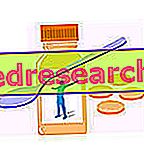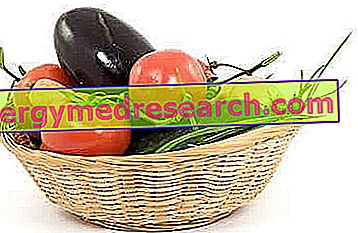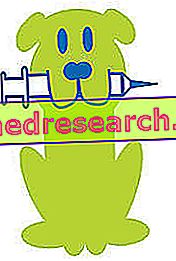Generality
Pineapple stalk and bromelain
The interest on the pineapple stalk, in the food, dietetic and phytotherapeutic fields, depends to a large extent on its content in " bromelina " (or "bromelaine").

- The "digestive" effect it has on food proteins
- The therapeutic effect on metabolism.
Functions of bromelain
We begin by specifying that, once ingested, bromelain enters the circulation as such at a rate of 40%.
The bromelain extracted from the pineapple stem has the following properties:
- proteolytic
- anticoagulants
- Anti inflammatory
- Edematous.
Proteolytic function
The pineapple stem bromelain is an enzyme of the sulphhydryl protease type; as such it is able to "digest proteins", breaking them down into smaller peptides.
Bromelain is not the only substance of vegetable origin capable of breaking down proteins; this property is in fact also common to the "ficina" of figs and the "papaina" of papaya.
In the human digestive system, the digestive function of proteins is entrusted to trypsin and chymotrypsin.
Use in the kitchen
Plant proteolytic enzymes are a common ingredient of many food products, used in the kitchen to make meat hold. On the other hand, the expedient was known already at the time of the Aztecs who, during cooking, used to wrap the meat in papaya leaves. For softening to be global and not just surface, bromelain and other proteolytic enzymes should be injected directly into the live animal, but this cruel practice has now been abandoned in favor of more innovative methods.
It is important to emphasize that bromelain must be used as a "living and active" principle; making it degrade loses its effectiveness completely.
Bromelain easily withstands even more freezing cycles but does not tolerate cooking. Up to 40 ° C it remains perfectly intact, but at 50 ° C concentrations begin to decrease by 17%. From a biological point of view, it exerts its effects perfectly at 35 ° C.
Anticoagulant function
Once in the bloodstream, bromelain performs its fibrinolytic action by promoting the degradation of fibrin, a protein involved in the formation of blood clots.
Coagulation, very useful in case of injury and bleeding, becomes dangerous when it arises inside a venous or arterial vessel, giving rise to thrombi (blood clumps).
The "fluidifying" action of the bromelain contained in the pineapple stem is also performed at the mucus level.
Anti-inflammatory properties
It is linked to its ability to influence prostaglandin synthesis and can be useful in promoting healing from small muscle injuries.
In addition, some people use it to improve symptoms associated with chronic inflammatory conditions.
Antiedematous functions
The antiedematous function is based on facilitating the drainage of liquids by minimizing venous stasis.
Indications
When to use the pineapple stalk?
The indications for the use of bromelain are different based on the therapeutic objective.
- Soften the meat: it is advisable to use bromelain (in association with ficina and papain) after the eventual maturation and during marinating (short or prolonged), adopting all the precautions to make it enter as much as possible into the muscular tissues. In cooking, bromelain tends to degrade and loses its effectiveness.
- In the case of thrombophlebitis, varicose veins, angina and cardiovascular diseases in general: it is possible to take the pineapple stem to take advantage of its possible anticoagulant function, according to the doses prescribed by the doctor.
- In case of rhinorrhea due to acute rhinitis, sinusitis, asthma and chronic bronchitis: the pineapple stem is a valid ally to liquefy the mucus, facilitating its expulsion.
- In case of contractures and strains: the pineapple stem can speed up the transit of the acute phase by reducing inflammation and pain
- For the same property, the pineapple stem is also recommended to improve the symptoms associated with rheumatoid arthritis
- For topical use, the pineapple stem seems effective in accelerating the healing of wounds and sores. However, this effect seems diametrically opposed to the anticoagulant one; caution is advised in the application
- Against cellulite and water retention: thanks to the potential anti-edematous effect.
Property and Effectiveness
What benefits has the pineapple stem shown during the studies?
Long tested and used in folk medicine (South and Central America), the pineapple stalk has not had the same success in official researches.
The only clinical application of bromelain approved by the "European Medicines Agency" dates back to 2012, in a topical product called "NexoBrid" for the removal of dead tissue caused by skin burns.
There is no other pharmacological application for bromelain as a nutraceutical or drug agent.
It has not been scientifically proven that pineapple stem bromelain is effective in treating diseases mentioned in the previous section; the pineapple stem and bromelain have not been authorized by the Food and Drug Administration for the treatment of any disorder.
Some insights have confirmed, but not justified, that pineapple stem bromelain can have a positive effect on the disposal of excess mucus (from rhinitis, sinusitis and bronchitis) and on the symptoms of rheumatoid arthritis.
Doses and Mode of Use
How to use the pineapple stalk?
The pineapple stalk is commercially available in the form of capsules, tablets and powders based on dry extract standardized in bromelain.
Its action was evaluated in clinical studies with standardized extracts and titrated in bromelain at a dose of 80 mg 3 times / day.
- When used as a digestive supplement, bromelain must be taken at main meals.
- When its anti-inflammatory, anticoagulant and anti-edema properties are sought, it should instead be taken on an empty stomach, so as to maximize its absorption in the intestine.
Side effects
Bromelain is generally well tolerated and, if taken at appropriate doses, does not cause any noteworthy side effects; however, it can be allergenic for predisposed individuals.
During the period of intake, digestive problems and menstrual flows more abundant than normal (hypermenorrhea or menorrhagia) can also arise.
Contraindications
When should pineapple stem not be used?
Pineapple allergic people should avoid supplements that contain pineapple stems and extracted bromelain.
The use of the pineapple stem is also contraindicated in the presence of gastric or duodenal ulcer.

Pharmacological Interactions
What drugs or foods can change the effect of the pineapple stalk?
The bromelain contained in the pineapple stem negatively interacts with anticoagulant drugs such as coumadin or aspirin.
Those who follow these therapies should not take bromelain-based products without first consulting their doctor.
Prudence also in conjunction with herbs and natural supplements with similar anticoagulant activity, such as ginkgo biloba and garlic.



